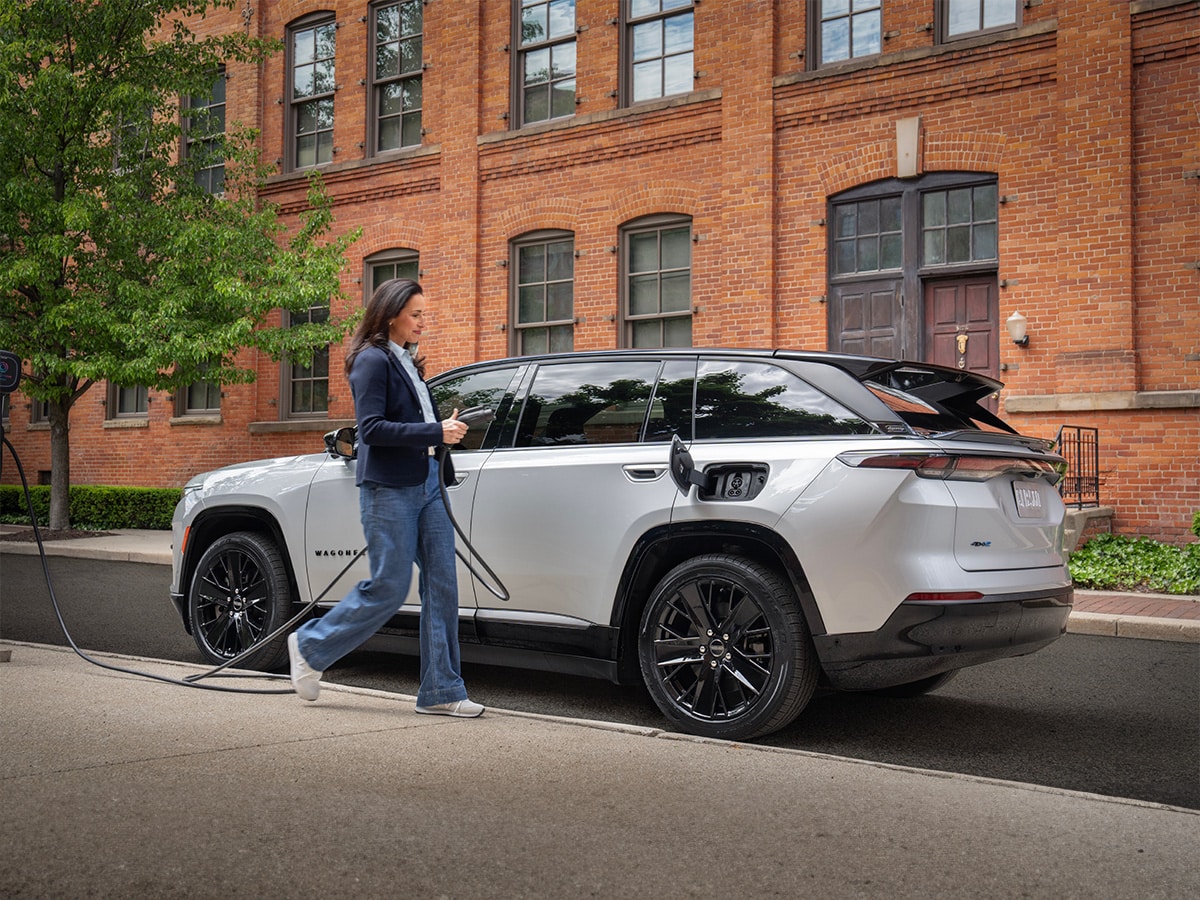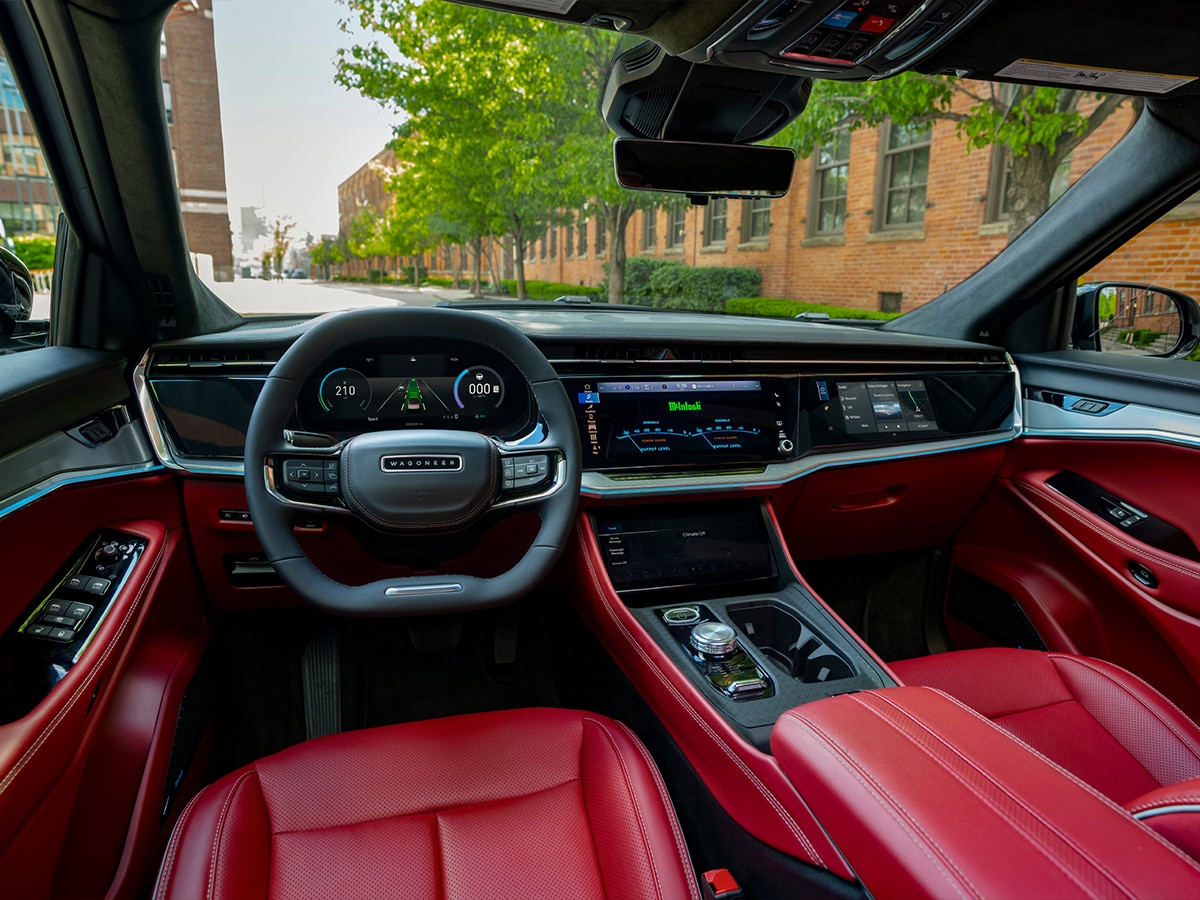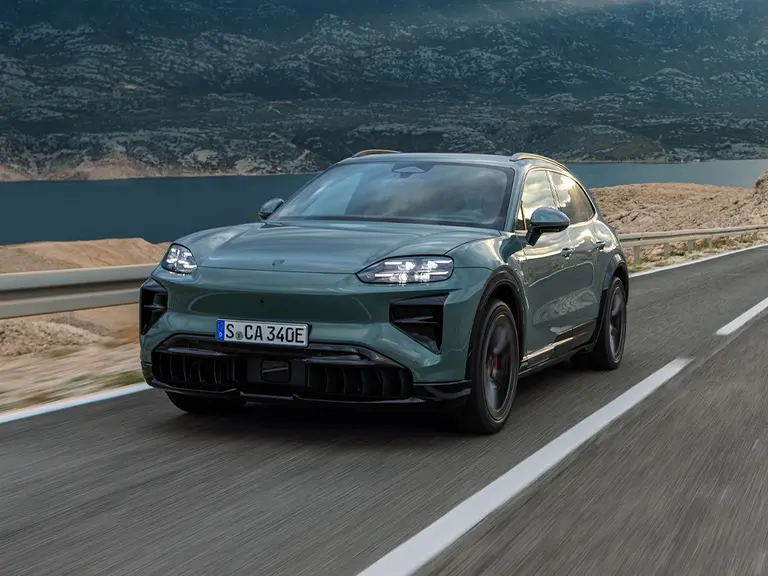
Published:
Readtime: 5 min
Every product is carefully selected by our editors and experts. If you buy from a link, we may earn a commission. Learn more. For more information on how we test products, click here.
While we’re still yearning from the loss of the supercharged V8 Hellcats, Demons, and Trackhawks, it’s nice to know Jeep is going to fill that void with a stupid fast EV. It’s called the Jeep Wagoneer S, and it’s a dual-motor EV based on the Stellantis group’s STLA-Large architecture which produces 447kW (600HP) and completes the 0-60 mph sprint in 3.4 seconds. Notably, it’s smaller than the petrol-powered Wagoneer and Grand Wagoneer, positioned as a ‘mid-size model’ and will compete with vehicles like the Kia EV9, Cadillac Lyriq, BMW X5 and the new Range Rover Sport.
“The launch of the all-electric Jeep Wagoneer S marks a new chapter in the storied history of the Jeep brand,” said Antonio Filosa, Jeep brand CEO. “Building upon nearly a century of innovation and design, this first global EV will introduce a whole new generation of owners to an experience that is distinctly Jeep and 100% electric in every way. With new energy in the Jeep vehicle lineup, ranging from EV to V-8, customers have never had more freedom to choose their own adventure.”
If you want to get your hands on the Jeep Wagoneer S (US$71,995), it will be sold in the U.S. in the fall of 2024 and then in key markets worldwide, including Australia.
RELATED: 2024 Jeep Gladiator Ute Gets a Raft of Tech Upgrades.

What’s Under the Skin of the Jeep Wagoneer S?
This is the first global Jeep brand BEV, and it’s based on STLA Large platform 400-volt architecture, which is already a little behind the architecture used by Korean brands like Hyundai and Kia. Still, it remains a viable option with more than 300 miles of range (482km) and puts it on par with other luxury entrants from Audi, BMW, and Volkswagen. The result of this 400-volt system is a 100-kilowatt-hour battery pack that can charge from 20-80% in 23 minutes (with a DC fast charger) which is about average.
While it doesn’t use the most advanced, cutting-edge architecture on the planet, the standard dual-motor, four-wheel drive powertrain delivers exceptional power while remaining relatively efficient. Yeah, it’s got 447kW (600HP) when you want it, but the front motor can disconnect to reduce energy draw when cruising to get maximum range.

Does the Jeep Wagoneer S Look Good?
We think this is a very smart-looking SUV, and Jeep has incorporated as much aerodynamic efficiency as possible into the design by using state-of-the-art wind tunnels in the production of the vehicle. Of course, in typical EV fashion, the signature seven-slot grille is now closed, and the sloping roofline “cascades” beneath a large cantilevered rear spoiler for maximum slipperyness. The final result is a coefficient of drag (CD) of 0.29, which is the lowest CD ever for a Jeep vehicle. Still, it’s far behind other new luxury SUVs.
For example, the new Porsche Macan EV has a drag coefficient of 0.25, the Tesla Model Y is 0.23, and the large Audi Q8 Sportback e-tron’s is 0.24. This will be most noticeable at highway speed limits where the range will likely take a big hit in the Jeep Wagoneer S, but we’ll have to reserve judgement until we get to test it for ourselves.

What’s the Interior Like in the Jeep Wagoneer S?
Step inside the Jeep Wagoneer S, and you’ll notice a certain Mercedes-Benz-style dashboard with plenty of screens—45 inches worth, to be exact. This includes a 12.3-inch driver cluster, a 10.25-inch front interactive passenger display, and a 12.3-inch centre display paired with a 19-speaker McIntosh sound system powered by a 1,200-watt amplifier and 12-inch subwoofer.
Of course, the quality of materials in Jeep vehicles has significantly improved over the last 5 years and the front cockpit of the Jeep Wagoneer S features several new details, including a new black ceramic-coated aluminium with haptic applique that appears on many of the vehicle’s touch points. We don’t typically like these haptic feedback buttons – which feature prominently on the driver control centre – but how they flow with the soft-wrapped doors and their chiselled cross-metal accents is undeniably good-looking.



What we’re not so keen on is the use of recycled resources and materials integrated into the seating, console, doors, and instrument panel surfaces. These typically look and feel awful, and while Jeep says these were “consciously integrated” into the cabin, using non-leather synthetic materials is nothing more than a conscious effort in cost-cutting and a surefire way to cheapen a US$71,995 vehicle.
The Wagoneer S will lead the brand forward as it strives to meet its lofty emissions goals as part of the Dare Forward 2030 long-term strategic plan. This plan aims for 50% of sales in the U.S. and 100% of sales in Europe to be battery-electric vehicles (BEV) by 2030. Jeep Australia’s only electric offering is the Plug-in Hybrid Jeep Grand Cherokee 4xe, while the upcoming Jeep Avenger BEV is priced from $53,990 plus on-road costs and will arrive Q4, 2024.
The 2024 Jeep Wagoneer S will launch initially in the U.S. and Canada before coming to Australia at a later date.

You’ll also like:


































Comments
We love hearing from you. or to leave a comment.